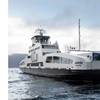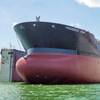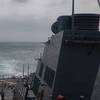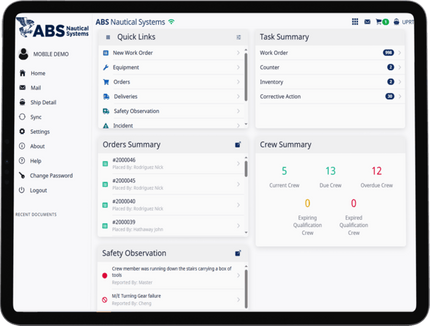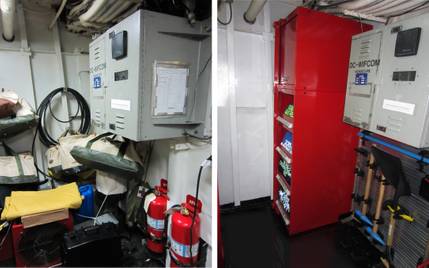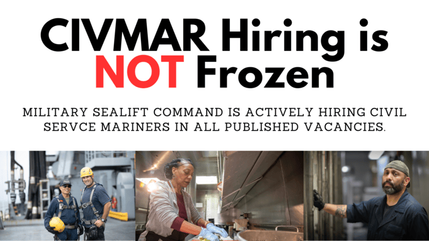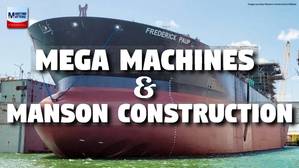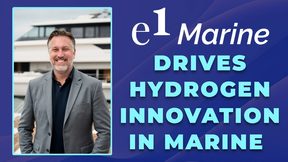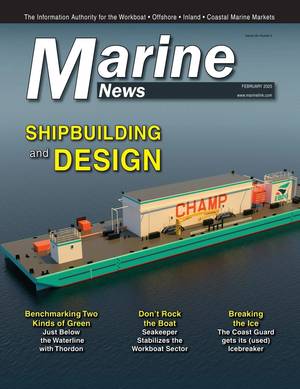Mark Riggio Responds to “Getting the Numbers Right”
Wendy Laursen’s article Getting the Numbers Right, published in the August issue of Maritime Reporter, sparked debate from ballast water management experts. Here Mark Riggio, owner of Simplify Ballast, LLC, provides his feedback on the article which outlines the challenges the industry has faced trying to reduce the occurrence of invasive marine species transferred by ballast water.
I felt it was important to speak out about this article for a number of reasons, but mostly because the tone of the article is out of touch with where the industry is heading, and I believe is perpetuating a myth that systems are not functioning as they were designed and that ballast water treatment has been a waste of time and money.
The IMO D-2 discharge standard was set as a maximum number of organisms. It is not a zero-discharge standard. Even the discharge standard for oily water separators is not a zero-discharge standard. Scientific zero is impractical to achieve in a commercially viable manner. It is not technically impossible; it is simply difficult to do with equipment that is economically palatable for the consumer.
Which brings me to the core issue with the paper: the supposition that the issues revolving around challenging water, system failures to meet the discharge standard, and type approval relate to system manufacturers.
The article mentions the G8 standard in reference to the approval of systems, but it has no applicability to an article written in 2024. The IMO’s G8 standard was replaced in 2019 by the IMO’s Code for Approval of Ballast Water Management Systems Code and every BWMS type approval prior to October 20, 2020 was revoked by the IMO, requiring each BWMS installed after that date to be type approved again under the Ballast Water Management System Code (BWMS Code, MEPC.300(78)). This date was intentional to ensure that most systems installed during the implementation cycle (September 8, 2019 – September 8, 2024) would be compliant with the BWMS Code.
The BWMS Code was approved by member states and many NGOs participated in the development of these guidelines, including the International Chamber of Shipping (ICS). The Code made testing requirements mandatory, increased the scope of testing, and was widely accepted as providing clear guidance to ship owners on system design limitations which needed to be accounted for during the purchasing process.
And yet, despite these clear limitations being detailed on the type approval certificates, including the variable flow rate of many systems in challenging water, shipowners made purchases of equipment predominantly based on commercial considerations (CAPEX pricing) rather than the operational limitations of the systems they were purchasing.
The article cites a study titled: Biological testing of ships’ ballast water indicates challenges for the implementation of the Ballast Water Management Convention. This study, which does indicate that almost half of all samples exceeded the limit of 10 viable organisms per cubic meter for organisms ≥50μm, contains three additional key points that bear attention:
1. The report notes that 88 samples (38%) were taken in-tank, which is not representative of how BWMS are approved. Only one BWMS is approved under the BWM Code for true, single-pass treatment. All others require either treatment on discharge or neutralization. This secondary treatment is not accounted for when in-tank water is tested. The report accurately notes this in their conclusions;
2. Nearly all ships were compliant in the 10 – 50μm size class and indicator microbe classes; and
3. The report notes two statistical differences in the data set, notably that: “For in-line samples, model 2 showed that samples associated with 20µm filter mesh size were more likely compliant in comparison to samples, where BWMS utilized filter mesh sizes of 40 and 50µm (Figure 5). This probability was highly significant between 20µm and 50µm (p < 0.01) but less significant between 20µm and 40µm (p < 0.1). Model 2 showed that BWMS type significantly affected the compliance outcome (p < 0.05), as systems that did not utilize active substances had higher odds of being compliant than systems utilizing active substances (Figure 6).” So, systems with finer filter mesh and systems that did not use active substances (which, in order to pass the BWM Code type approval testing have the smaller mesh filters) were statistically more likely to pass the test.
This is critical point because it speaks directly to my core issue with the article. It is, actually, quite easy to determine who is at fault or why a discharge test has been failed. It is so simple, in fact, that numerous papers submitted to this MEPC (MEPC 82/INF.5, MEPC/82/INF.11, MEPC 82/INF.33 and MEPC 82/INF.40) indicate clearly that in many cases it is the bypasses themselves that are causing the failed tests.
Organisms that are allowed to get into the vessel during a bypass event become resident in the sediments onboard and hide, or simply bypass future treatment of the ballast once they are onboard. These sediment layers are much lower on ships with finer mesh filters, and it is much higher on the increasingly common BWMS that use high levels of active substances to avoid installing a filter.
And these BWMS are increasingly common because removing the filter makes them cheaper.
During MEPC 81, when guidance on ships operating in challenging water (MEPC 81/4/4) was finally agreed to, it was the manufacturers and the Administrations that tried to point this out to the shipowners. We attempted to put clear guidance into the document that following a bypass event, ballast water exchange needed to take place with an exchange volume of three to five times the overall tank volume in order to promote a return to D-2 compliance for the vessel. ICS was instrumental in having that section removed from the document as being “too restrictive” for ships, thus ensuring that ships would continue to face issues with discharge tests following a bypass event for two or three more port calls after the original bypass.
And as to whether or not performance is improving, the predominance of information in the industry indicates that it is:
MEPC 82/INF.5 (GlobalTestNet), 89% of systems met D-2 standard (2052 total reported tests) with contamination, mixing, and BWMS improper operation being noted as the leading causes of failed tests
MEPC 82/INF.33 (Japan), 12 of 17 systems (71%) passed, noting that only one ship, responsible for three of the failed tests, did not pass any tests. Two other failed tests were for ships that subsequently passed testing, so nine of the 10 ships sampled proved compliance using their onboard BWMS. The paper notes that “These results imply that better operation and maintenance by each ship could improve the compliance status with the D-2 performance standard. Therefore, it can be said that better familiarization of the crew with the BWMS is important.”
MEPC 82/INF.40 (Australia), 73% of the 22 samples taken were compliant with D-2. This report was a follow-up to the study cited in your article and is based on samples taken on 19 ships in 2023-2024. This study also provides details on each failure in paragraphs 26 and 27 with bypass, sediments, and improper operation of systems as the stated factors.
In fact, each of the papers cited above indicate the same sentiment noted by SGS’s White Paper, Report on Commissioning Testing of Ballast Water Management Systems, published in 2020, which states: “As such, we can conclude that, in general, the BWMS are “functional” in that the parts of the BWMS installed onboard are operational. This conclusion tends to support that idea the type approval testing (operational testing) of these systems has been done appropriately.”
The issue is not that BWMS are not working, nor that they are not installed correctly, nor that they are not tested for type approval with sufficient rigor. The issue is that BWMS are not being selected based on the identified system design limitations, they are not being used by crews properly and they are being bypassed for convenience rather than necessity. As a consultant, I see this all the time.
The key problem in ballast water management is shipowners who want to purchase the least expensive system and then want to have it installed by the lowest bidding shipyard and abandon their crews to deal with the equipment themselves. The crews are then forced to try and use new equipment that owners are not willing to pay for training on and they face pressures from the office and from shoreside cargo handling to ensure that they can load at their historical, pre-treatment rates.
The IMO recognized this potential when they envisioned the Ballast Water Management Plan – the document intended to guide crews on how to use their new BWMS and to inform and guide all parties about the expected ballast performance of the vessel while managing ballast water under the Convention. Unfortunately, this too has been abandoned by shipowners as an unnecessary expense and the cookie-cutter plans aboard most vessels do not provide the necessary guidance to allow crews to operate without guidance.




